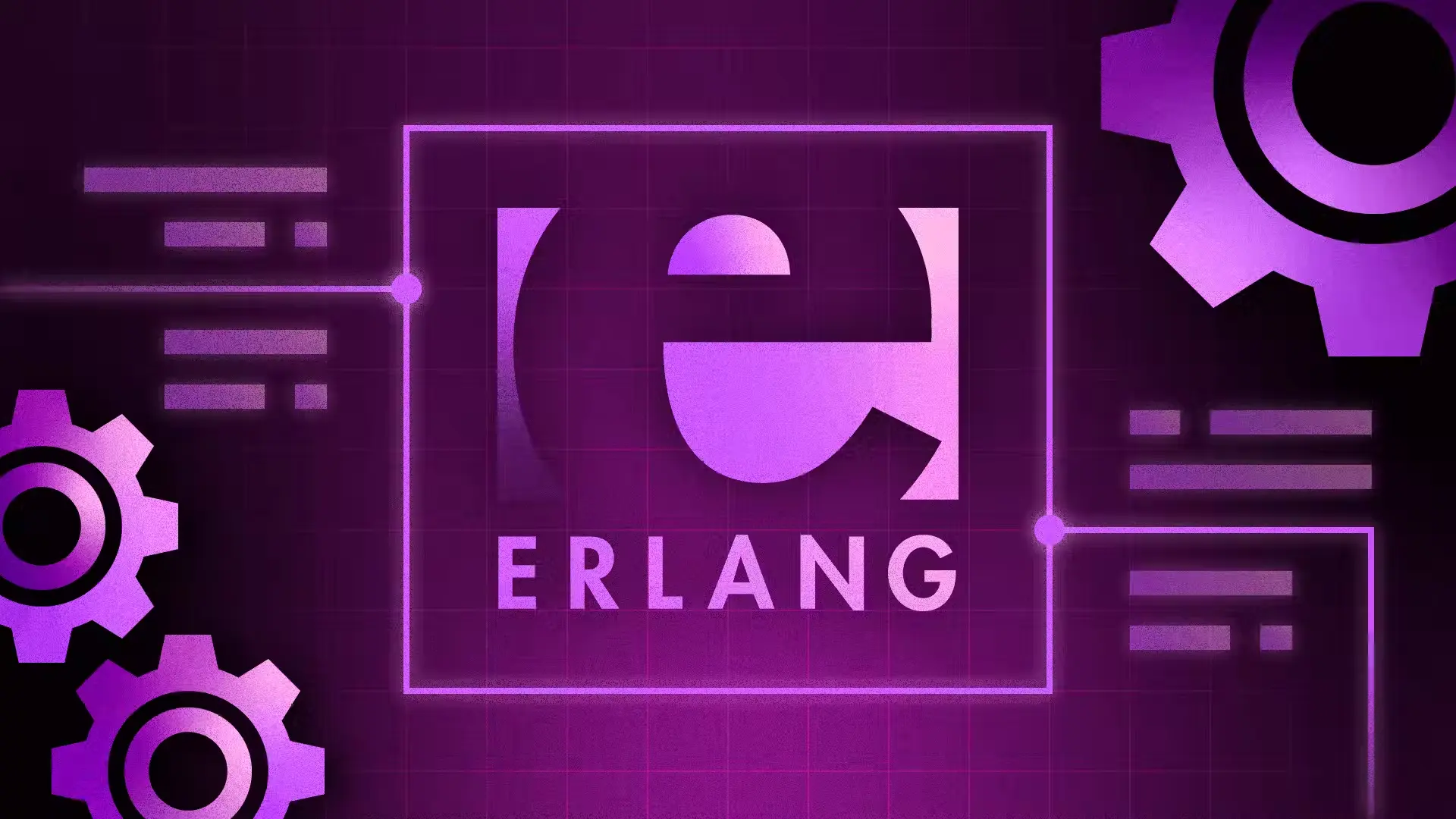Erlang is a powerful programming language and runtime environment designed for rapid task execution with built-in support for distribution and fault tolerance. It’s widely used by engineers to develop real-time systems and software. This robust, dynamically typed language excels in scalability.
Erlang leverages OTP (Open Telecom Platform) libraries to streamline tasks, allowing users to create event-driven triggers via the event manager. It implements distribution using TCP/IP and enables real-time data tracking. Additionally, Erlang simplifies upgrades and maintenance with standard release handling practices.

When was Erlang Invented?
Erlang was created in 1986 by Joe Armstrong, Robert Virding, and Mike Williams at the Ericsson Computer Science Laboratory. The goal was to meet the stringent demands of the telecommunications industry. Erlang was specifically designed to handle large-scale telephony applications, offering high reliability and the ability to manage thousands of concurrent connections. Its key features, including concurrency, fault tolerance, and distributed computing, make it an ideal choice for developing robust and scalable systems.
Since its inception, Erlang has evolved significantly. In 1998, it was open-sourced, paving the way for wider adoption across various industries. Today, Erlang is used in sectors such as finance, e-commerce, and beyond, all benefiting from its ability to handle real-time, mission-critical applications with ease.
What is Erlang Used For?
- Messaging Applications
Erlang’s concurrency and distributed properties make it ideal for building instant messaging applications. Popular platforms like WhatsApp and Facebook leverage Erlang’s capabilities to ensure efficient real-time communication. - IoT (Internet of Things) Products
Erlang is also well-suited for developing IoT products and services. Its ability to handle application-level communication and manage data congestion makes it valuable for network engineers working on edge systems and other IoT solutions. - Telecom and eCommerce
Erlang was originally developed for telecommunications, and it remains a powerful tool for building adaptable and result-driven systems in this industry. The language’s sophisticated runtime environment, paired with OTP (Open Telecom Platform) libraries, provides the foundation for developing highly reliable telecommunication and eCommerce solutions. - Blockchain Development
Erlang’s built-in fault tolerance and scalability make it a strong candidate for blockchain applications. Blockchain systems require decentralized, real-time processing, and Erlang’s capabilities ensure that transactions are processed uninterrupted, offering the reliability and uptime necessary for blockchain networks. - Banking and Fintech
Due to its high availability and rapid development cycles, Erlang is increasingly used to create online banking platforms and fintech solutions. Its low-latency performance, multicore processing, and scalability make it ideal for building complex financial tools, such as hedge fund platforms that require precision and speed.
What Makes Erlang Unique?
- Concurrency:
Erlang excels at managing concurrency with its lightweight process model. The Erlang VM can efficiently handle millions of threads, each running a different process. These processes communicate seamlessly, enhancing system performance and communication, all while maintaining a low memory footprint. - Distributed Programming:
Erlang’s distributed programming model allows for efficient data transfer via message passing without relying on shared memory. It also supports hot code loading, meaning that updates can be made to services without interrupting ongoing execution. Additionally, Erlang’s built-in distributed database, Mnesia, simplifies managing distributed systems. - Scalability:
Erlang is highly scalable. It allows developers to add more machines or CPU cores to handle increased traffic, making it suitable for a variety of applications, from eCommerce platforms to telecommunications systems. The language’s non-blocking TCP servers also enable developers to scale applications without significant performance loss. - Reliability:
Erlang’s fault tolerance is exceptional. With features like supervision trees and gen-servers, Erlang can quickly restart failed tasks and manage bugs at a smaller scale. Engineers can define supervision strategies to customize restart processes and thresholds, and live debugging capabilities allow for real-time problem-solving. Erlang’s tracing and root cause analysis tools also enhance system reliability.
Frequently Asked Questions
What is Message Passing in Erlang?
Erlang avoids shared memory, relying instead on asynchronous message passing to enable communication between processes. A sender process dispatches a general object to a receiver process, which then interprets the object and executes the necessary code. This approach ensures efficient and safe inter-process communication.
What Projects Should I Avoid Developing with Erlang?
While Erlang is versatile, it’s not ideal for performance-optimized tasks or low-level operations like string manipulation or parsing. Erlang is less suitable for GUI desktop applications, high-computation models, or projects that do not require real-time updates.
What Are the Predefined Macros in Erlang?
Erlang includes several predefined macros, such as:
?MODULE: Returns the current module’s name.?MODULE_STRING: Returns the current module’s name as a string.?FILE: Returns the name of the current file.?MACHINE: Returns the name of the current machine.
Can I Get Online Support for Erlang?
Absolutely! Erlang has a robust online community, along with extensive documentation and resources available to help you get started. The language has been around for decades, so there’s a wealth of knowledge and support available online.






